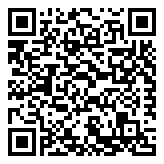- Home
- About Us
- IT Services
- Understanding IT
- Understanding Shadow IT
- Understanding Your Virtual Identity
- Understanding the Modern Office
- IT Threat Glossary
- Understanding Business Continuity
- Windows Server 2003: End of Life
- Understanding the Internet of Things
- Understanding Network Security
- Understanding SOX
- Understanding BYOD
- Understanding PCI DSS
- Windows XP End of Life
- Understanding HIPAA
- Cloud Computing
- News & Events
- Blog
- Support
- Contact Us
- Home
- About Us
-
IT Services
-
Understanding IT
- Understanding Shadow IT
- Understanding Your Virtual Identity
- Understanding the Modern Office
- IT Threat Glossary
- Understanding Business Continuity
- Windows Server 2003: End of Life
- Understanding the Internet of Things
- Understanding Network Security
- Understanding SOX
- Understanding BYOD
- Understanding PCI DSS
- Windows XP End of Life
- Understanding HIPAA
- Cloud Computing
- News & Events
- Blog
- Support
- Contact Us
Managed IT Force Blog
Tip of the Week: Six Keys to Managing Your Phone’s Battery Life
Considering how much as we rely on our mobile devices each day, it comes as no surprise how stressful the “LOW BATTERY” notification can be. While you might assume that it only seems to appear earlier and earlier in the day, there are in fact a variety of conditions that cause your device to die much faster. That’s why we wanted to share a few tips to help you understand what is happening to your battery, and what you can do to manage its longevity a little better.
Condition 1: Your Battery Will Degrade Over Time, and Naturally Hold Less Power in a Full Charge
While the ones currently being put into smartphones are much better than the ones used in the past, batteries have long been one of the fastest components to fail in smartphones and laptops alike. The timeline of this failure can come as a surprise, too—manufacturers admit that, by the time a year has passed, most batteries will have lost a sizable amount of their available life. Many recommend users to expect a loss of 20 percent after 400 charge cycles. With this knowledge, you can see that it is important to adjust how a device is charged to help extend the lifespan of its battery.
Condition 2: Temperature Extremes Can Encourage Degradation
A smartphone’s battery capacity can also be adversely impacted by very high as well as very low temperatures. This is a common issue for people who often leave their devices in their cars. With the potential for extreme temperatures on either side of the spectrum depending on where someone lives, the enclosed car only exacerbates these impacts. Keeping a device at a happy medium can therefore help keep the device’s batteries from losing too much potential.
Condition 3: You Let Your Battery Run Out of Charge
Not too terribly long ago, the prevailing advice for preserving a mobile device battery’s lifespan was to let it get all the way down to zero before you next charged it. More recent innovations in batteries and their internal chemistry have actually made this a bad thing to do for the battery’s longevity. Instead, it is advisable to keep your device’s battery somewhere between 20 and 90 percent.
Condition 4: The Screen is Too Bright
It just makes sense that keeping your screen turned all the way up would result in a greater draw on the device’s power reserves. However, it can actually harm your battery in the long term as well. Fortunately, both iOS and Android devices now have built-in utilities to help you control your screen’s brightness, but you can also boost it further by manually setting your brightness to the lowest brightness that is still visible.
Condition 5: The Screen Stays on Too Long
Most modern smartphones feature a setting that turns off the screen if there is no activity registered for a set period, usually ranging between a few seconds to a few minutes. There are also applications that can give you more granular control over this, and some smartphone makers will include extra software to keep unnecessary battery usage at a minimum.
Condition 6: You Haven’t Adjusted the On-Board Battery Saver
Most smartphones today come with some capability to control how much battery life is taken up by background processes. While this solution might not give you the longevity you would expect from a device that likely cost you over a grand, it can help you to make the most of it.
Properly managing your mobile device’s battery can have a lot of impact on how it operates, which in turn can impact your finances. To learn more ways to get more out of the technology that your business relies on, subscribe to our blog, and give Managed IT Force a call at 724-473-3950.
About the author
Dan has 25 years of progressive experience in the IT industry. He has led three successful companies focused on small and medium business IT solutions since 1997.
Tag Cloud


Comments